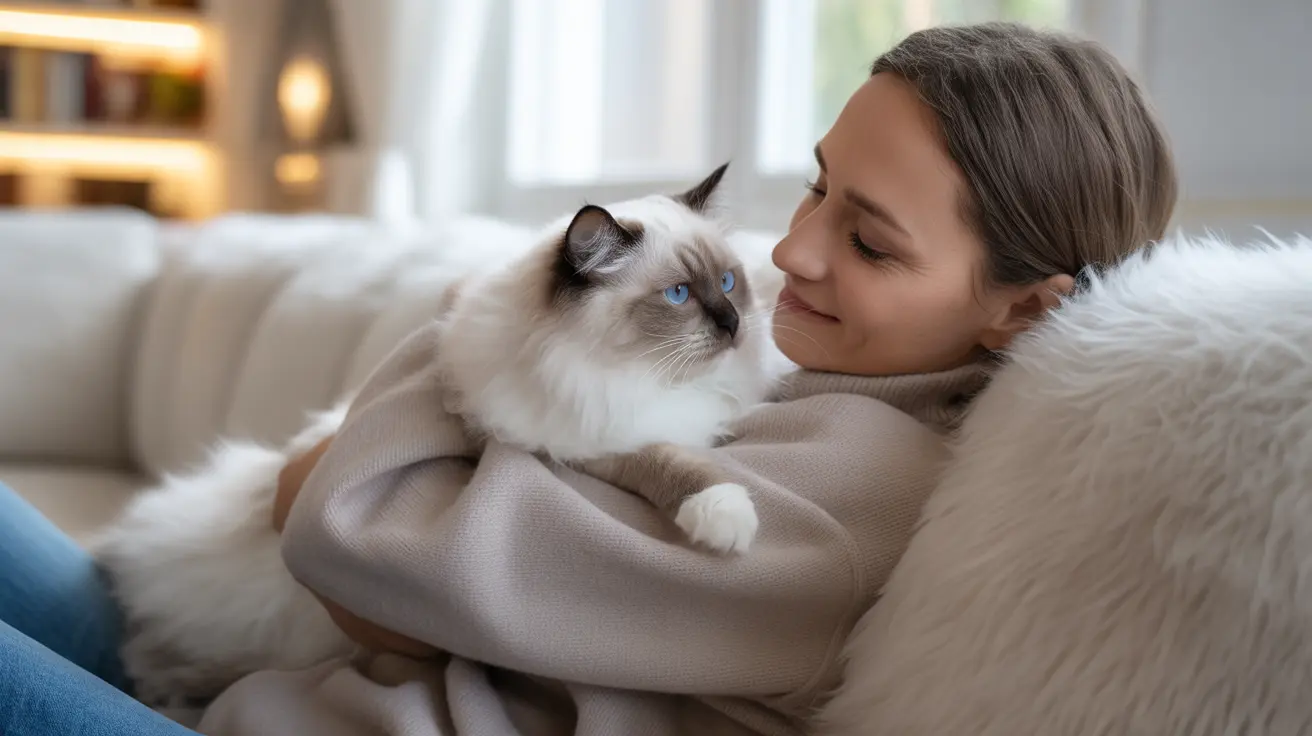Have you ever wondered about your cat's uncanny ability to pick up on your emotions or predict when something's wrong? Cats possess remarkable sensory capabilities that allow them to detect and respond to various aspects of human behavior, emotions, and even physical changes. This fascinating ability has been the subject of numerous scientific studies, revealing just how perceptive our feline companions truly are.
From reading facial expressions to sensing emotional distress, cats demonstrate an impressive range of perceptual abilities that help them understand and interact with their human companions. Let's explore the fascinating ways cats can sense and respond to human emotions, physical conditions, and behavioral changes.
The Science Behind Cats' Emotional Intelligence
Research has shown that cats possess sophisticated emotional intelligence, allowing them to process and respond to human emotional states. Studies from the University of Milan have demonstrated that cats can distinguish between human smiles and frowns, often responding with increased affection when they perceive positive emotions.
Cats use a combination of visual, auditory, and olfactory cues to interpret human emotions. Their ability to integrate multiple sensory inputs helps them form a comprehensive understanding of their human companions' emotional states.
Physical and Behavioral Changes Cats Can Detect
Cats are incredibly attuned to changes in their environment and their human companions' physical conditions. Their acute senses enable them to detect various physiological changes, including:
- Hormonal fluctuations during pregnancy
- Blood sugar changes in diabetic individuals
- Stress-related chemical changes
- Physical illness or pain
- Changes in daily routines or behavior patterns
How Cats Show Their Understanding
When cats sense something is wrong with their humans, they often display specific behavioral responses:
- Increased physical contact through rubbing or cuddling
- More frequent vocalizations
- Protective behavior
- Following their owner more closely
- Changes in their own activity levels
The Role of the Human-Cat Bond
The strength of the emotional bond between cats and their owners plays a crucial role in their perceptive abilities. Cats who share close relationships with their humans tend to be more attuned to their emotional states and physical well-being. This connection develops over time through consistent interaction and mutual trust.
Using Your Cat's Perceptive Abilities
Understanding your cat's ability to sense changes in your emotional and physical state can help strengthen your bond and improve communication. Pay attention to changes in your cat's behavior, as they might be responding to something you haven't yet noticed about yourself.
Frequently Asked Questions
How do cats sense and respond to changes in their human's emotions?
Cats use a combination of visual, auditory, and olfactory cues to detect emotional changes. They observe facial expressions, body language, and voice tone, responding with increased attention, affection, or distance depending on the emotion detected.
Can cats tell when their owners are sad, angry, or happy by reading facial expressions and voice tone?
Yes, scientific studies have confirmed that cats can distinguish between different emotional states through facial expressions and voice tone. They typically respond positively to happy expressions and maintain distance from angry or negative emotions.
What behaviors do cats show when they notice their human is distressed or upset?
Cats often display comforting behaviors such as increased physical contact, purring, gentle headbutting, or staying close to their distressed owner. Some cats may also become more vocal or protective.
Are cats able to detect physical health changes in humans, such as illness or pregnancy?
While more research is needed, there is evidence suggesting cats can detect certain physical changes through their acute sense of smell and observation of behavioral changes. Many owners report their cats showing different behavior during pregnancy or illness.
How can understanding a cat's body language help owners strengthen their emotional bond?
By learning to interpret cat body language, owners can better respond to their cat's needs and emotions, creating a stronger mutual understanding. This awareness helps build trust and deepens the human-cat relationship.
Understanding your cat's perceptive abilities can lead to a stronger, more meaningful relationship with your feline companion. By recognizing and appreciating their capacity to sense changes in our emotional and physical well-being, we can better appreciate the depth of the human-cat bond and the remarkable capabilities of these fascinating animals.






